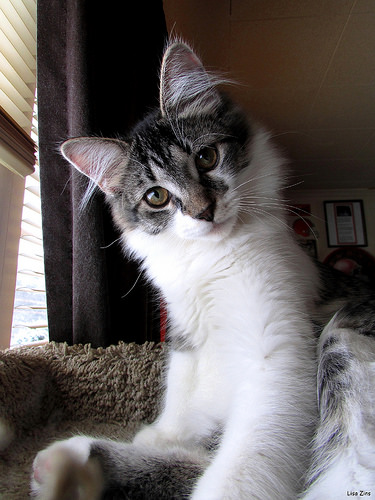Recognizing your cat’s body language: Aggressive & defensive postures
by Ontario SPCA and Humane Society | Cat Care | May 4, 2018
Sometimes it can be hard to understand why our kitty friends lash out aggressively – either to us, or to each other. The ASPCA has put together a very helpful list of body postures and signs to watch out for that your cat is feeling stressed, or looking to be left alone.
Read the full, helpful article HERE on the ASPCA’s website.

Offensive postures include:
- A stiff, straight-legged upright stance
- Stiffened rear legs, with the rear end raised and the back sloped downward toward the head
- Tail is stiff and lowered or held straight down to the ground
- Direct stare
- Upright ears, with the backs rotated slightly forward
- Piloerection (hackles up), including fur on the tail
- Constricted pupils
- Directly facing opponent, possibly moving toward him
- Might be growling, howling or yowling
Defensive postures include:
- Crouching
- Head tucked in
- Tail curved around the body and tucked in
- Eyes wide open with pupils partially or fully dilated
- Ears flattened sideways or backward on the head
- Piloerection (hackles up)
- In an anxious cat, whiskers might be retracted. In a fearful cat, whiskers might pan out and forward to assess distance between himself and the danger
- Turning sideways to the opponent, not straight on
- Open-mouthed hissing or spitting
- Might deliver quick strikes with front paws, claws out
Overt aggression, whether defensive or offensive, includes:
- Swatting, striking with paws
- Biting
- Fighting
- Growling, shrieking
- Scratching
- Preparing for an all-out attack by rolling onto side or back and exposing all weapons: teeth and claws
- In this position, your cat might attempt to grab your hand and bring it to his mouth to bite it
Categories
Testimonial
Your dedication and support
It is with and because of your dedication and support that helpless animals are being saved. Thank you for everything.
-Wendy
Sign up for news and updates
Thank you for joining our online community.